Improving Estimation of Soil Moisture Content Using a Modified Soil Thermal Inertia Model
Abstract
1. Introduction
2. Materials and Methods
2.1. Study Site and Data
2.2. Methods
2.2.1. Multiscale Soil Thermal Inertia Model
2.2.2. Estimation of Finer Spatial Resolution Soil Temperature
Wavelet Transform of ASTER Thermal Data
Retrieval of Land Surface Component Temperatures
2.2.3. Estimation of Soil Sensible Flux
2.2.4. Estimation of Soil Latent Flux
2.2.5. Estimation and Evaluation of Soil Moisture
3. Results
3.1. Surface Albedo
3.2. Soil Temperature
3.3. Soil Latent and Sensible Fluxes
3.4. The Estimation of Surface Soil Moisture Content
4. Discussion
5. Conclusions
Author Contributions
Funding
Acknowledgments
Conflicts of Interest
References
- Wu, G.L.; Zhang, Z.N.; Wang, D.; Shi, Z.H.; Zhu, Y.J. Interactions of soil water content heterogeneity and species diversity patterns in semi-arid steppes on the Loess Plateau of China. J. Hydrol. 2014, 519, 1362–1367. [Google Scholar] [CrossRef]
- Zhao, W.; Li, Z.L. Sensitivity study of soil moisture on the temporal evolution of surface temperature over bare surfaces. Int. J. Remote Sens. 2013, 34, 3314–3331. [Google Scholar] [CrossRef]
- Li-Ge, B. Research on the Drought during the Vegetation Growth Period of Inner Mongolia Based on TVDI. J. Anhui Agric. Sci. 2011, 39, 5945–5948. [Google Scholar]
- Zhang, D.; Tang, R.; Tang, B.; Wu, H.; Li, Z. A Simple Method for Soil Moisture Determination From LST–VI Feature Space Using Nonlinear Interpolation Based on Thermal Infrared Remotely Sensed Data. IEEE J. Sel. Top. Appl. Earth Obs. Remote Sens. 2015, 8. [Google Scholar] [CrossRef]
- Escorihuela, M.J.; Chanzy, A.; Wigneron, J.P.; Kerr, Y.H. Effective soil moisture sampling depth of L-band radiometry: A case study. Remote Sens. Environ. 2010, 114, 995–1001. [Google Scholar] [CrossRef]
- Cai, G.; Xue, Y.; Hu, Y.; Wang, Y.; Guo, J.; Luo, Y.; Wu, C.; Zhong, S.; Qi, S. Soil moisture retrieval from MODIS data in Northern China Plain using thermal inertia model. Int. J. Remote Sens. 2007, 28, 3567–3581. [Google Scholar] [CrossRef]
- Peischl, S.; Walker, J.P.; Ye, N.; Ryu, D.; Kerr, Y. Sensitivity of multi-parameter soil moisture retrievals to incidence angle configuration. Remote Sens. Environ. 2014, 143, 64–72. [Google Scholar] [CrossRef]
- Li, B.; Rodell, M. Spatial variability and its scale dependency of observed and modeled soil moisture over different climate regions. Hydrol. Earth Syst. Sci. Discuss. 2012, 9, 10245–10276. [Google Scholar] [CrossRef]
- Lu, Y.; Horton, R.; Zhang, X.; Ren, T. Accounting for soil porosity improves a thermal inertia model for estimating surface soil water content. Remote Sens. Environ. 2018, 212, 79–89. [Google Scholar] [CrossRef]
- Doninck, J.V.; Peters, J.; Baets, B.D.; Clercq, E.M.D.; Ducheyne, E.; Verhoest, N.E.C. The potential of multitemporal Aqua and Terra MODIS apparent thermal inertia as a soil moisture indicator. Int. J. Appl. Earth Obs. Geoinf. 2011, 13, 941. [Google Scholar] [CrossRef]
- Zeng, J.; Chen, K.; Cui, C.; Bai, X. A Physically Based Soil Moisture Index from Passive Microwave Brightness Temperatures for Soil Moisture Variation Monitoring. IEEE Trans. Geosci. Remote Sens. 2020, 58, 2782–2795. [Google Scholar] [CrossRef]
- Kim, S.B.; Moghaddam, M.; Tsang, L.; Burgin, M.; Xu, X.L.; Njoku, E.G. Models of L-Band Radar Backscattering Coefficients Over Global Terrain for Soil Moisture Retrieval. IEEE Trans. Geosci. Remote Sens. 2014, 52, 1381–1396. [Google Scholar] [CrossRef]
- Gao, Z.; Xu, X.; Wang, J.; Yang, H.; Huang, W.; Feng, H. A method of estimating soil moisture based on the linear decomposition of mixture pixels. Math. Comput. Model. 2013, 58, 606–613. [Google Scholar] [CrossRef]
- Nocita, M.; Stevens, A.; Noon, C.; Wesemael, B.V. Prediction of soil organic carbon for different level of soil moisture using Vis-NIR spectroscopy. Geoderma 2012, 199. [Google Scholar] [CrossRef]
- Kang, J.; Jin, R.; Li, X.; Ma, C.; Qin, J.; Zhang, Y. High spatio-temporal resolution mapping of soil moisture by integrating wireless sensor network observations and MODIS apparent thermal inertia in the Babao River Basin, China. Remote Sens. Environ. 2017, 191, 232–245. [Google Scholar] [CrossRef]
- Taktikou, E.; Bourazanis, G.; Papaioannou, G.; Kerkides, P. Prediction of Soil Moisture from Remote Sensing Data. Procedia Eng. 2016, 162, 309–316. [Google Scholar] [CrossRef][Green Version]
- Verstraeten, W.W.; Veroustraete, F.; van der Sande, C.; Grootaers, I.; Feyen, J. Soil moisture retrieval using thermal inertia, determined with visible and thermal spaceborne data, validated for European forests. Remote Sens. Environ. 2006, 101, 299–314. [Google Scholar] [CrossRef]
- Palombo, A.; Pascucci, S.; Loperte, A.; Lettino, A.; Castaldi, F.; Muolo, M.R.; Santini, F. Soil Moisture Retrieval by Integrating TASI-600 Airborne Thermal Data, WorldView 2 Satellite Data and Field Measurements: Petacciato Case Study. Sensors 2019, 19, 1515. [Google Scholar] [CrossRef]
- Watson, K. Application of thermal modeling in the geologic interpretation of IR images. Proc. Seventh Int. Symp. Remote Sens. Environ. 1971, 3, 2017–2041. [Google Scholar]
- Price, J.C. Thermal inertia mapping: A new view of the Earth. J. Geophys. Res. 1977, 18, 2582–2590. [Google Scholar] [CrossRef]
- Pratt, D.A.; Ellyett, C.D. The thermal inertia approach to mapping of soil moisture and geology. Remote Sens. Environ. 1979, 8, 151–168. [Google Scholar] [CrossRef]
- Price, J.C. On the analysis of thermal infrared imagery: The limited utility of apparent thermal inertia. Remote Sens. Environ. 1985, 18, 59–73. [Google Scholar] [CrossRef]
- Scheidt, S.; Lancaster, N.; Ramsey, M. Eolian dynamics and sediment mixing in the Gran Desierto, Mexico, determined from thermal infrared spectroscopy and remote-sensing data. Geol. Soc. Am. Bull. 2011, 123, 1628–1644. [Google Scholar] [CrossRef]
- Xue, Y.; Cracknell, A.P. Advanced thermal inertia modeling. Int. J. Remote Sens. 1995, 16, 431–446. [Google Scholar] [CrossRef]
- Tao, Y. The Application of Thermal Inertia Method the Monitoring of Soil Moisture of North China Plain Based on NOAA-AVHRR Data. J. Remote Sens. 1997, 1, 24–31. [Google Scholar]
- Zhang, R.; Sun, X.; Zhu, Z.; Su, H.; Tang, X. A remote sensing model for monitoring soil evaporation based on differential thermal inertia and its validation. Sci. China Ser. D Earth Sci. 2003, 46, 342–355. [Google Scholar]
- Liu, Z.-h.; Zhao, Y.-s. Research on the method for retrieving soil moisture using thermal inertia model. Sci. China Ser. D 2006, 49, 539–545. [Google Scholar] [CrossRef]
- Minacapilli, M.; Cammalleri, C.; Ciraolo, G.; D’Asaro, F.; Lovino, M.; Maltese, A. Thermal Inertia Modeling for Soil Surface Water Content Estimation: A Laboratory Experiment. Soil Sci. Soc. Am. J. 2012, 76, 92. [Google Scholar] [CrossRef]
- Chen, H.L.; Feng, D.Y.; Zou, C.H. The study of method on monitoring soil moisture in wheat field by NOAA/AVHRR data. Remote Sens. Technol. Appl. 1998, 13, 27–35. [Google Scholar]
- Liu, J.Y.; Zhang, G.; Li, D.R. Detection of anomaly temperature based on ASTER and ETM+ thermal infrared image. Infrared Laser Eng. 2008, 37, 677–680. [Google Scholar]
- Carslow, H.S.; Jaeger, J.C.; Morral, J.E. Conduction of Heat in Solids, Second Edition. J. Eng. Mater. Technol. 1986, 108, 378. [Google Scholar] [CrossRef]
- Chang, S.G.; Yu, B. Adaptive wavelet thresholding for image denoising and compression. IEEE Trans. Image Process. 2000, 9, 1532–1546. [Google Scholar] [CrossRef] [PubMed]
- Liu, Z.-H.; Zhao, Y.-S.; Song, X.-N. A Simplified Surface Albedo Inverse Model with MODIS Data. Remote Sens. Technol. Appl. 2004, 7, 508–511. [Google Scholar] [CrossRef]
- Liu, Z.-H.; Zhao, Y.-S. Retrieval of plant and soil component temperature under different light conditions based on genetic algorithm. Trans. Chin. Soc. Agric. Eng. 2012, 28, 161–166. [Google Scholar]
- Cammalleri, C.; Anderson, M.; Ciraolo, G.; D’Urso, G.; Kustas, W.P.; La Loggia, G.; Minacapilli, M. The impact of in-canopy wind profile formulations on heat flux estimation in an open orchard using the remote sensing-based two-source model. Hydrol. Earth Syst. Sci. 2010. [Google Scholar] [CrossRef]
- Chehbouni, A.; Nouvellon, Y.; Lhomme, J.P.; Watts, C.; Boulet, G.; Kerr, Y.H.; Moran, M.S.; Goodrich, D.C. Estimation of surface sensible heat flux using dual angle observations of radiative surface temperature. Agric. For. Meteorol. 2001, 108, 65. [Google Scholar] [CrossRef]
- Sauer, T.J.; Hatfield, J.L.; Prueger, J.H. Aerodynamic Characteristics of Standing Corn Stubble. Agron. J. 1996, 5, 733–739. [Google Scholar] [CrossRef]
- Shuttleworth, W.J.; Wallace, J.S. Evaporation from sparse crops-an energy combination theory. Q. J. Royal Meteorol. Soc. 1985, 111, 839–855. [Google Scholar] [CrossRef]
- Swinbank, W.C. Long-wave radiation from clear skies. Q. J. Royal Meteorol. Soc. 2010, 89, 339–348. [Google Scholar] [CrossRef]
- Kustas, W.P.; Norman, J.M. Evaluation of soil and vegetation heat flux predictions using a simple two-source model with radiometric temperatures for partial canopy cover. Agric. For. Meteorol. 1999, 94, 29. [Google Scholar] [CrossRef]
- Choudhury, B.J.; Idso, S.B.; Reginato, R.J. Analysis of an empirical model for soil heat flux under a growing wheat crop for estimating evaporation by infrared-temperature based energy balance equation. Agric. For. Meteorol. 1987, 39, 283–297. [Google Scholar] [CrossRef]
- Claps, P.; Laguardia, G. Assessing spatial variability of soil water content through thermal inertia and NDVI. Int. Soc. Opt. Eng. 2004, 5232, 378–387. [Google Scholar]
- Wong, T.-T. Performance evaluation of classification algorithms by k-fold and leave-one-out cross validation. Pattern Recognit. 2015, 48, 2839–2846. [Google Scholar] [CrossRef]
- Riihelä, A.; Manninen, T.; Laine, V.; Andersson, K.; Kaspar, F. CLARA-SAL: A global 28 yr timeseries of Earth’s black-sky surface albedo. Atmos. Chem. Phys. 2013, 13, 3743–3762. [Google Scholar] [CrossRef]
- Kondo, J.; Ishida, S. Sensible Heat Flux from the Earth’s Surface under Natural Convective Conditions. J. Atmos. Sci. 1997, 54, 498–509. [Google Scholar] [CrossRef]
- Sauer, T.J.; Norman, J.M. Simulated canopy microclimate using estimated below-canopy soil surface transfer coefficients. Agric. For. Meteorol. 1995, 75, 135–160. [Google Scholar] [CrossRef]
- Sauer, T.J. Sensible and Latent Heat Exchange at the Soil Surface Beneath a Maize Canopy; ProQuest Dissertations Publishing: Madison, WI, USA, 1993. [Google Scholar]
- Wan, Z.; Wang, P.; Li, X. Using MODIS Land Surface Temperature and Normalized Difference Vegetation Index products for monitoring drought in the southern Great Plains, USA. Int. J. Remote Sens. 2004, 25, 61–72. [Google Scholar] [CrossRef]
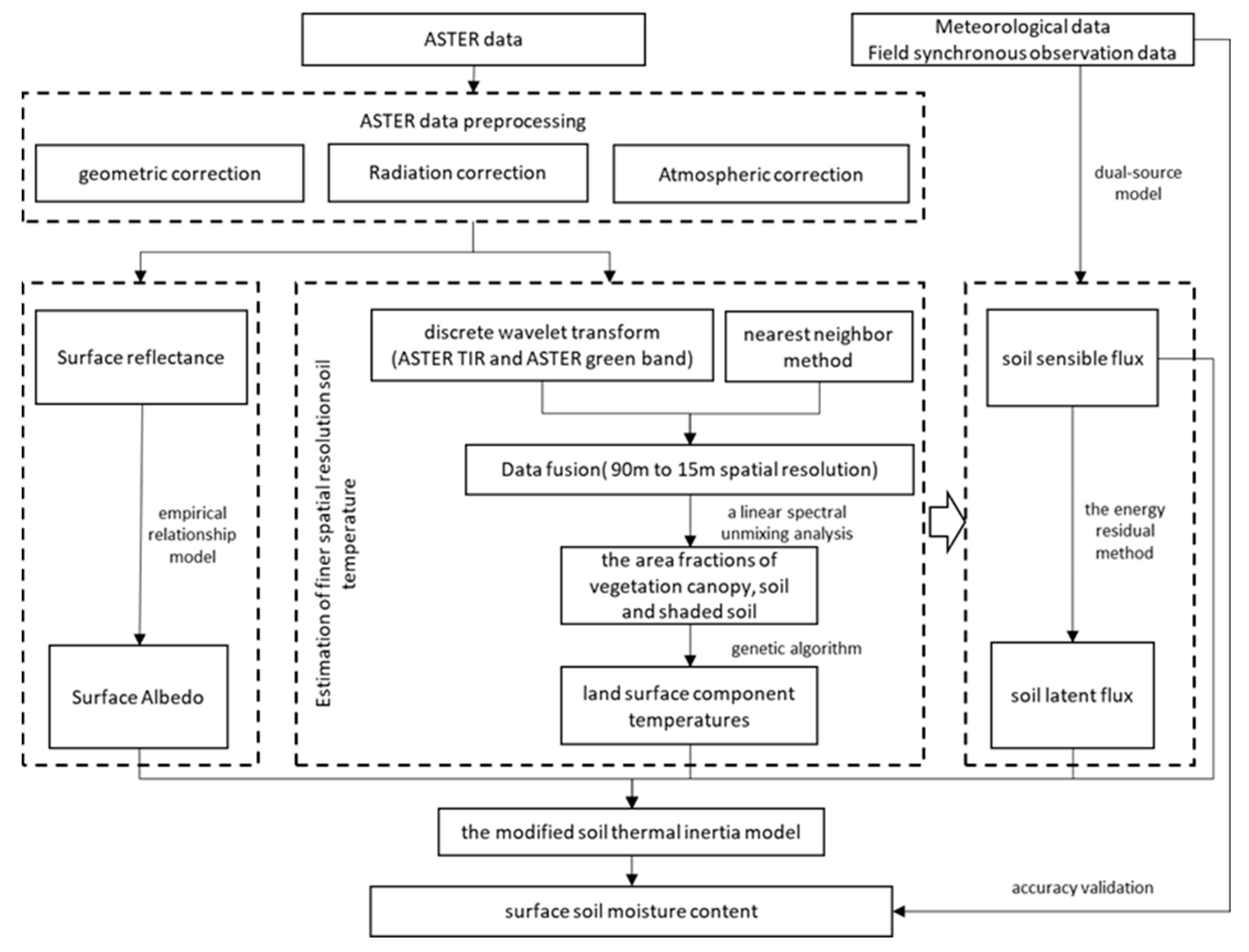
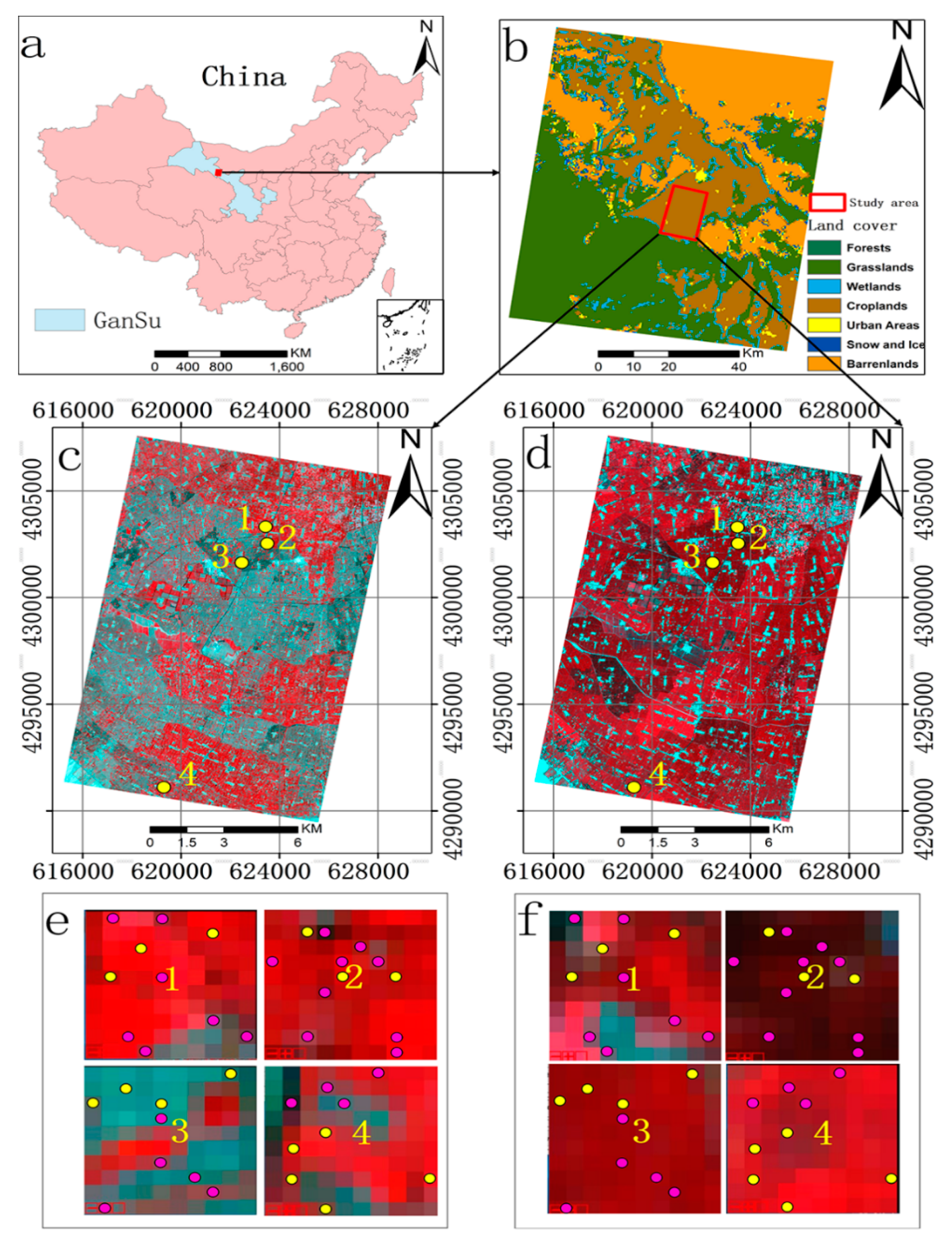
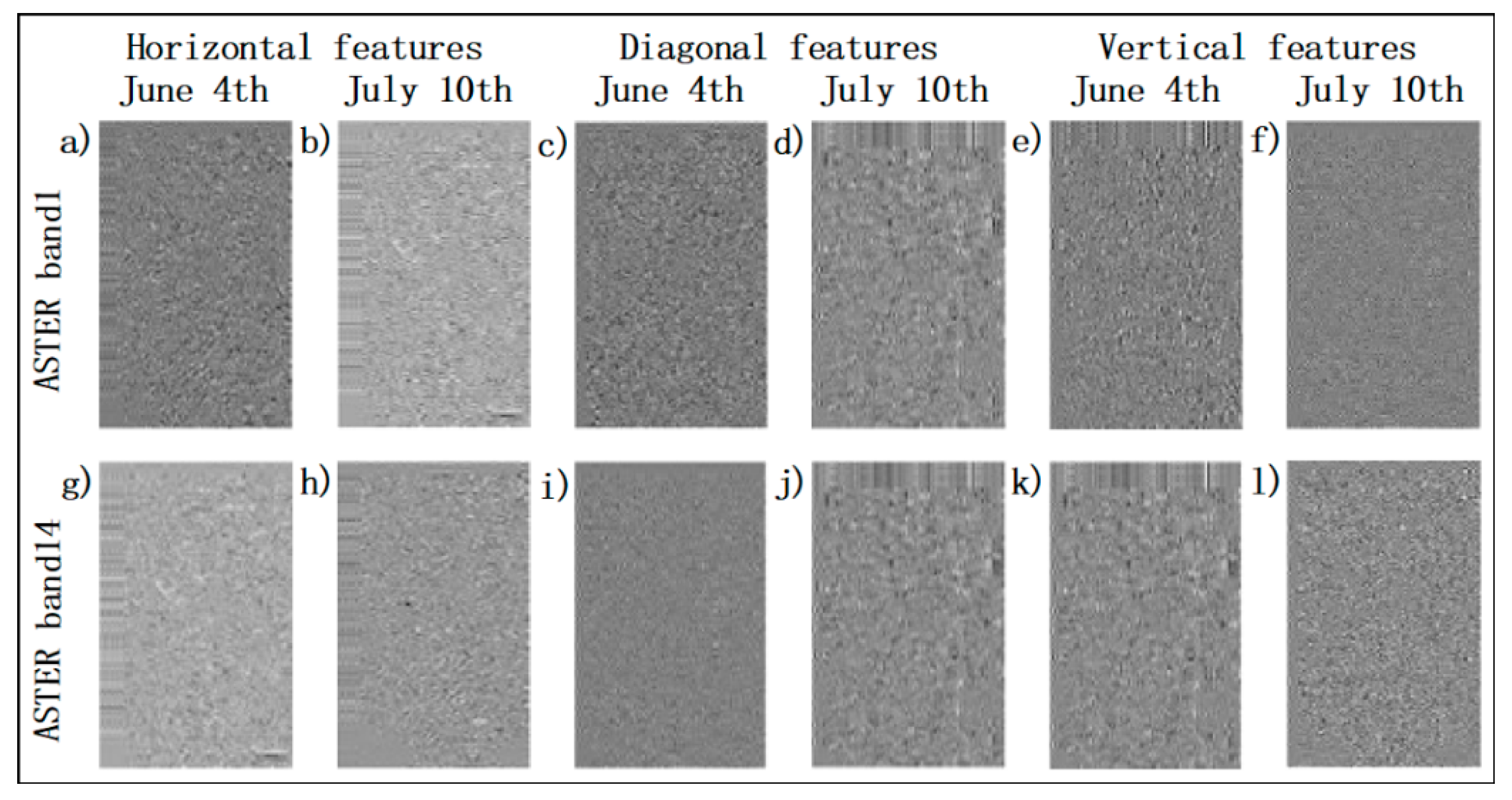
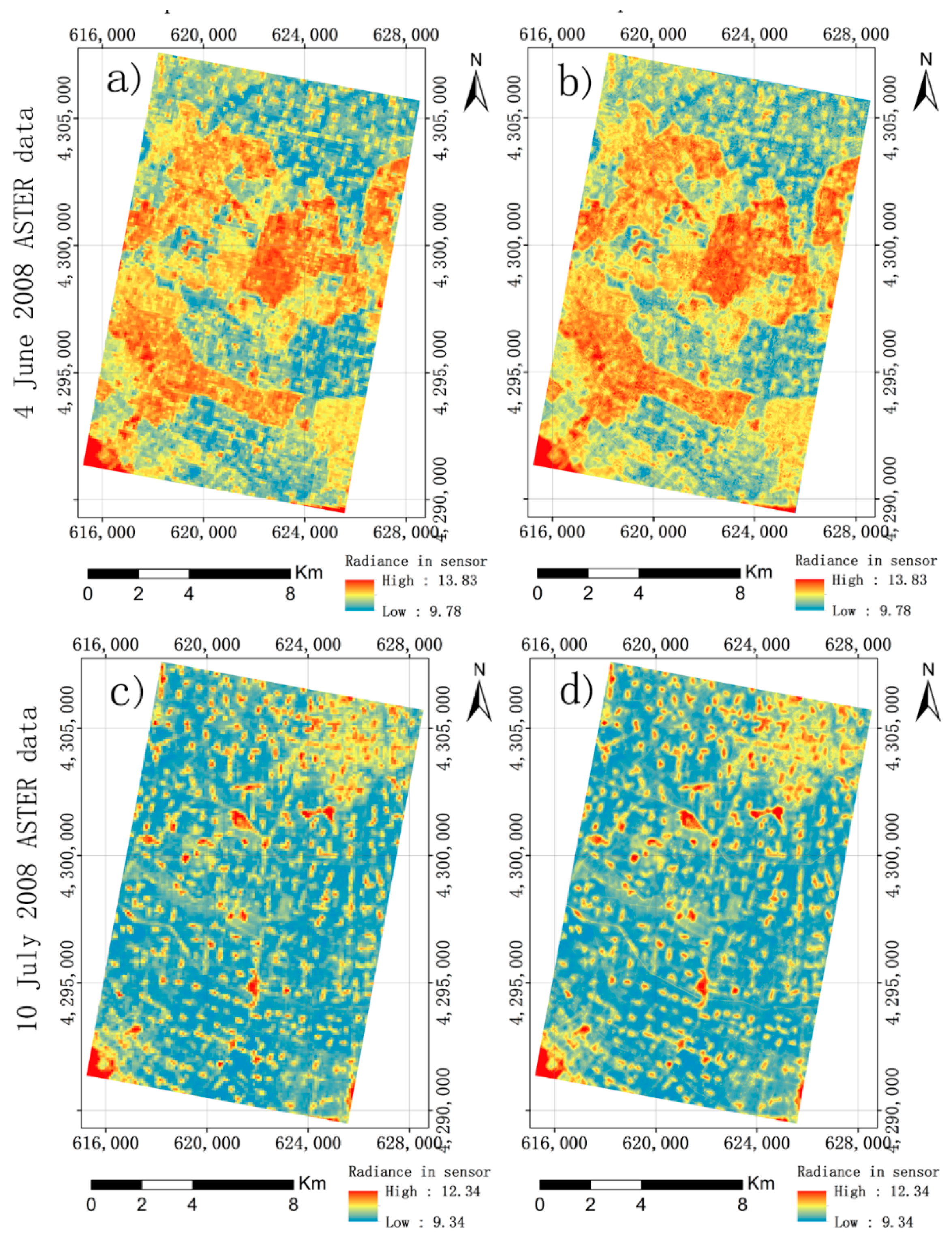
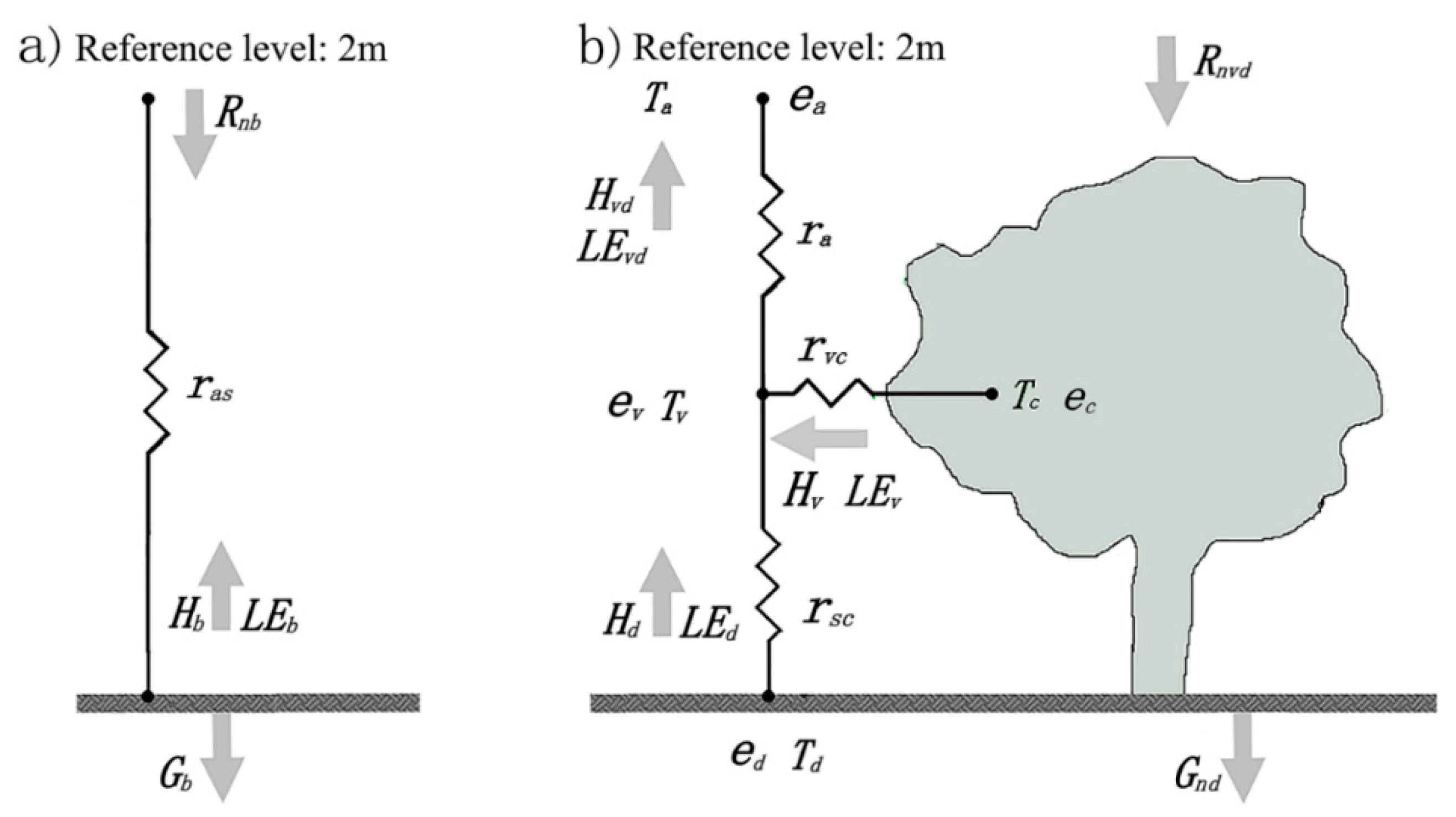
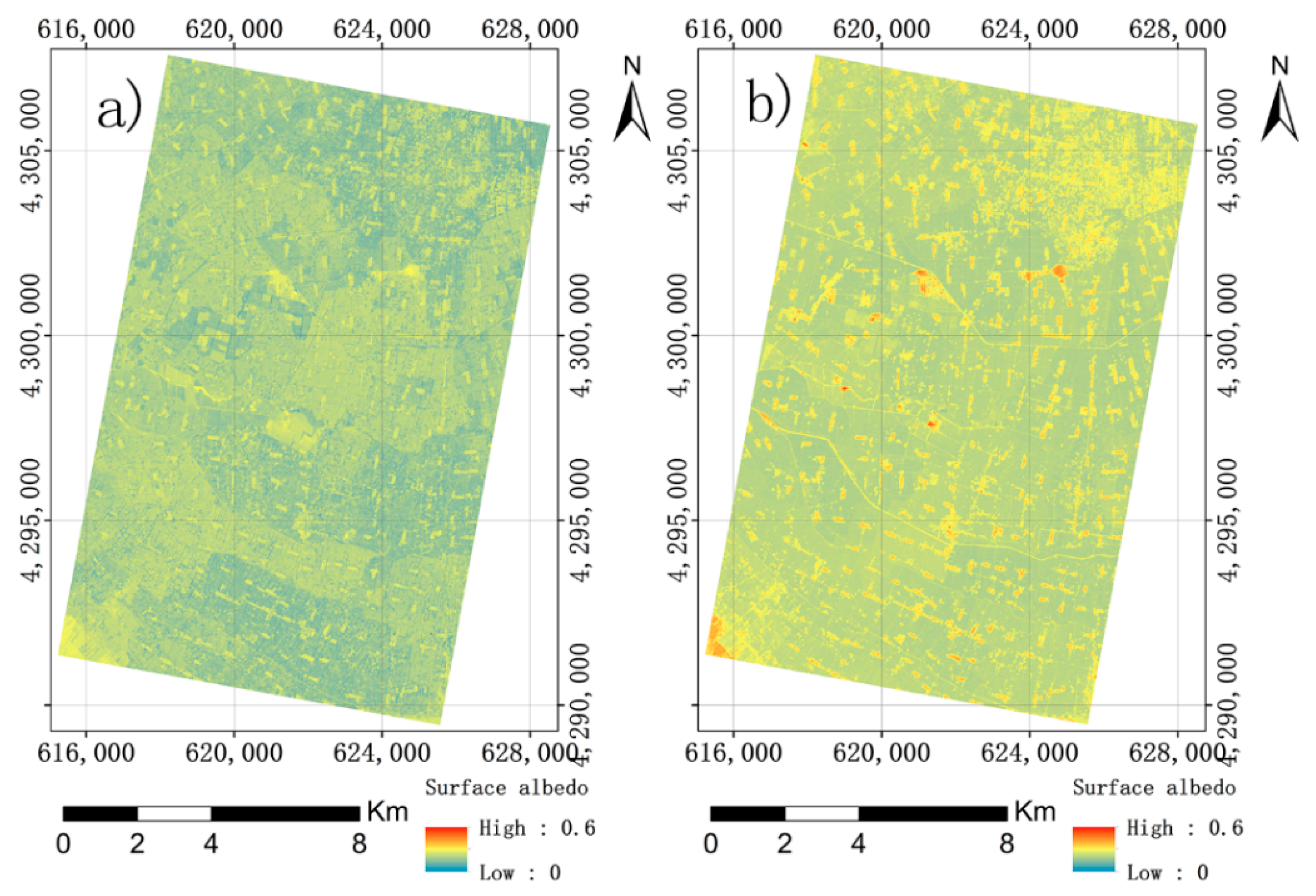
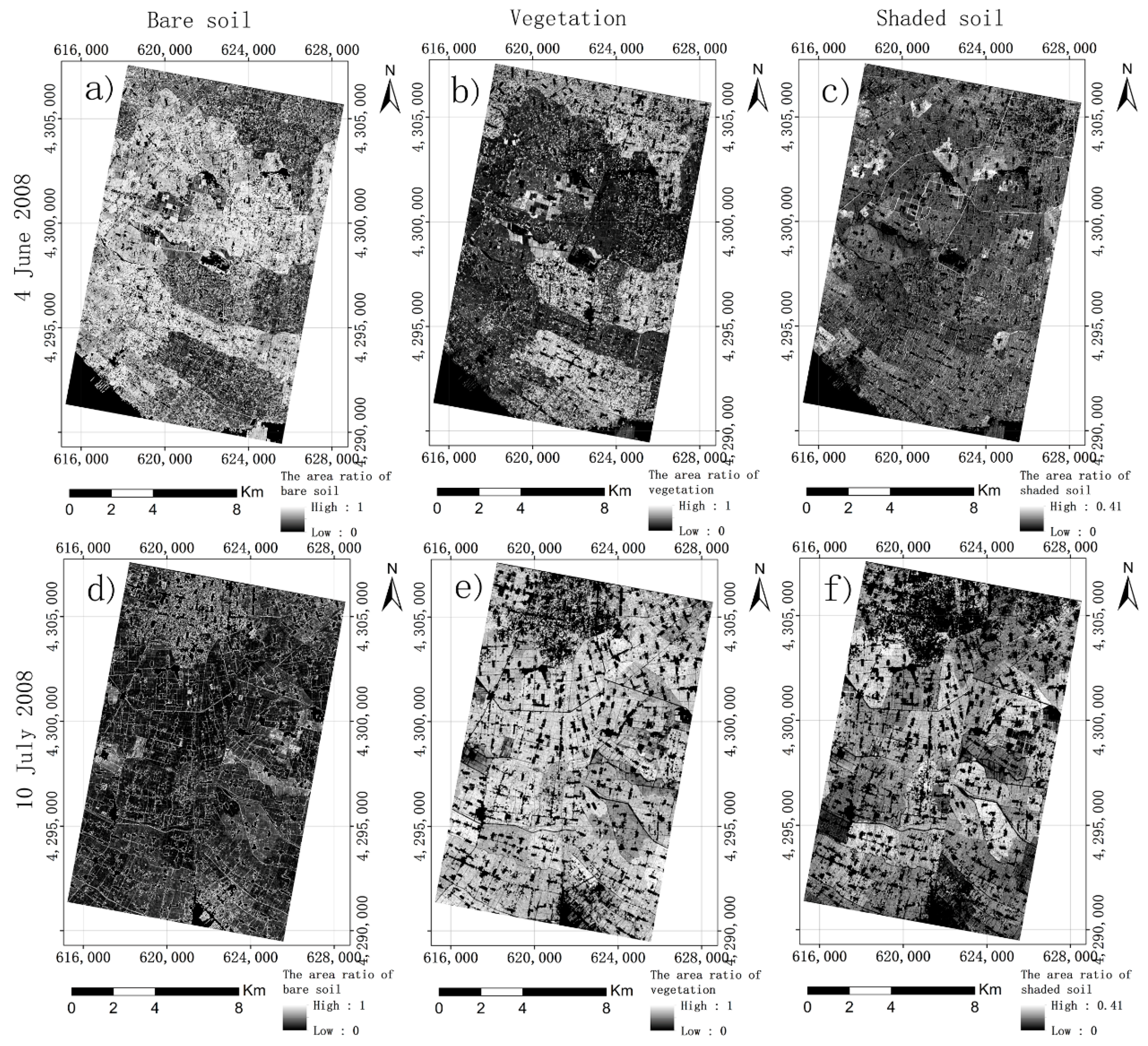

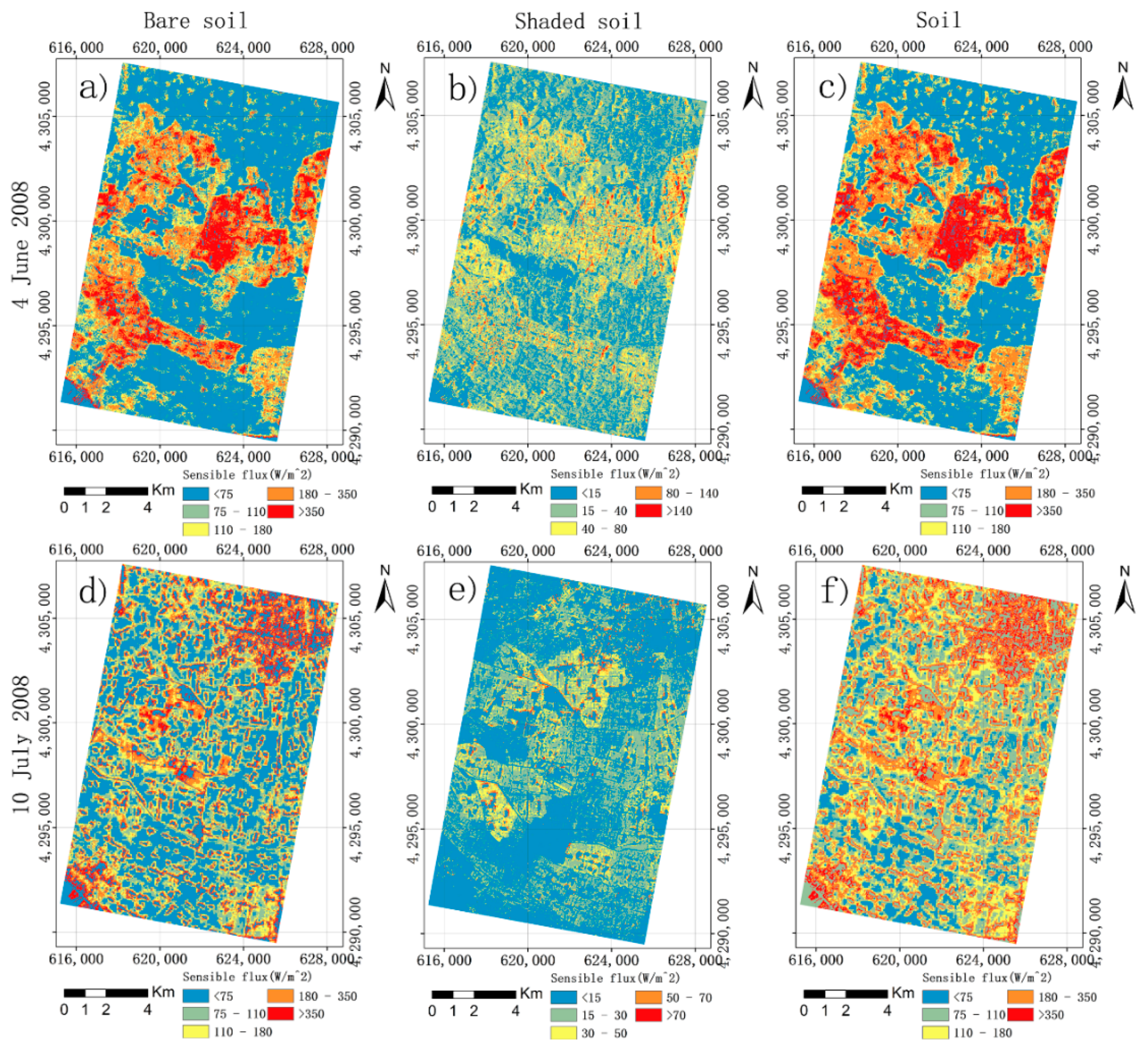
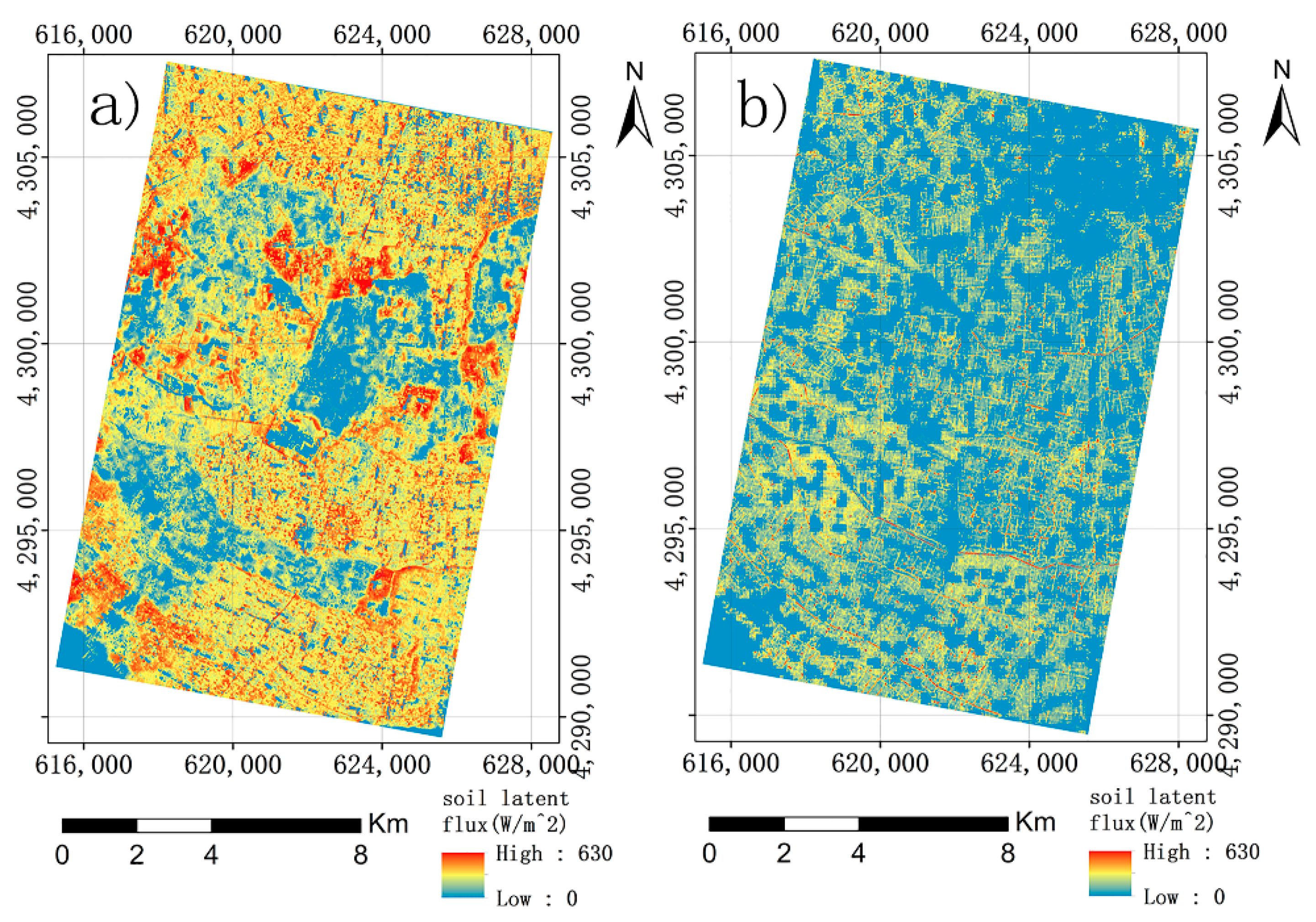
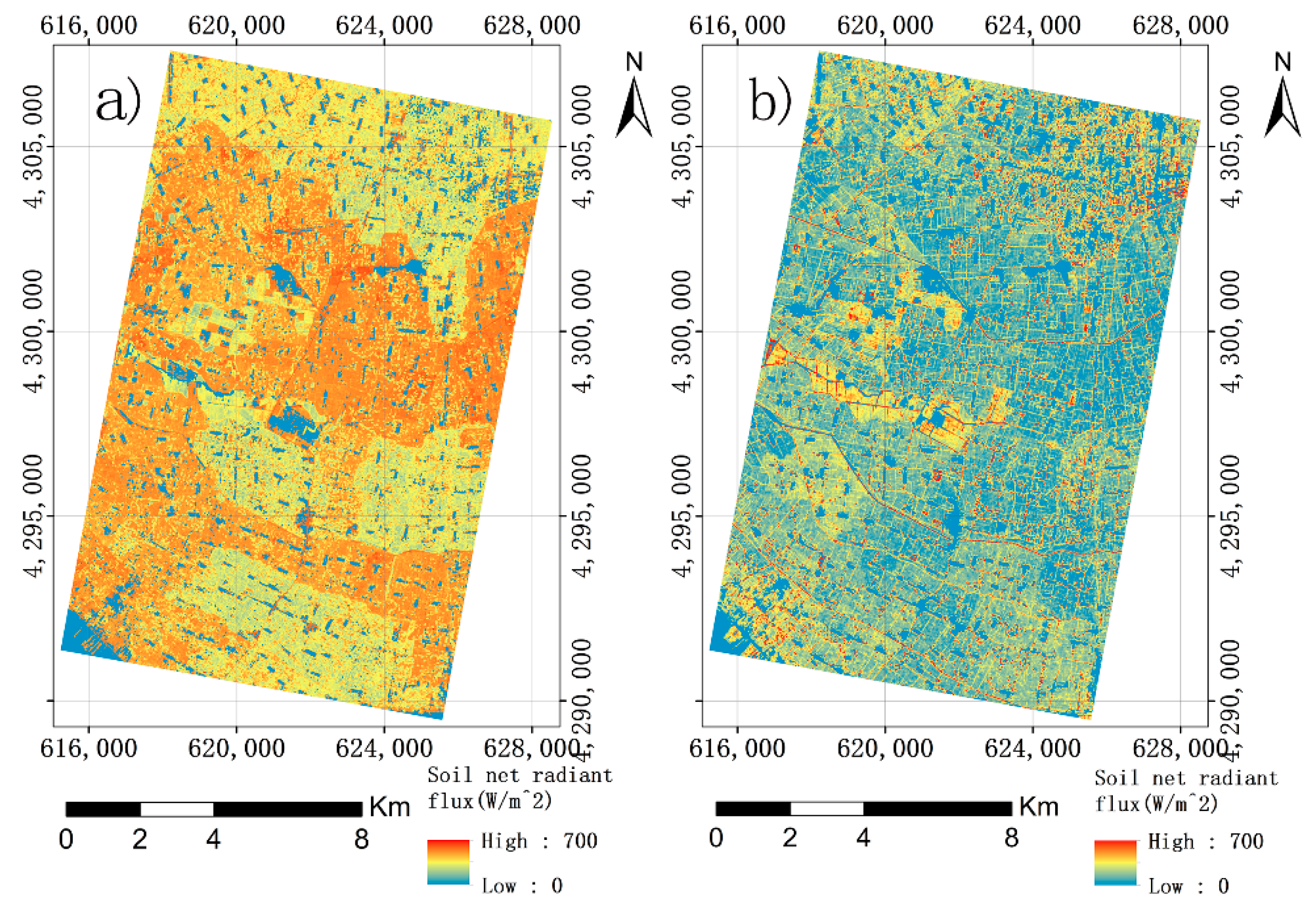
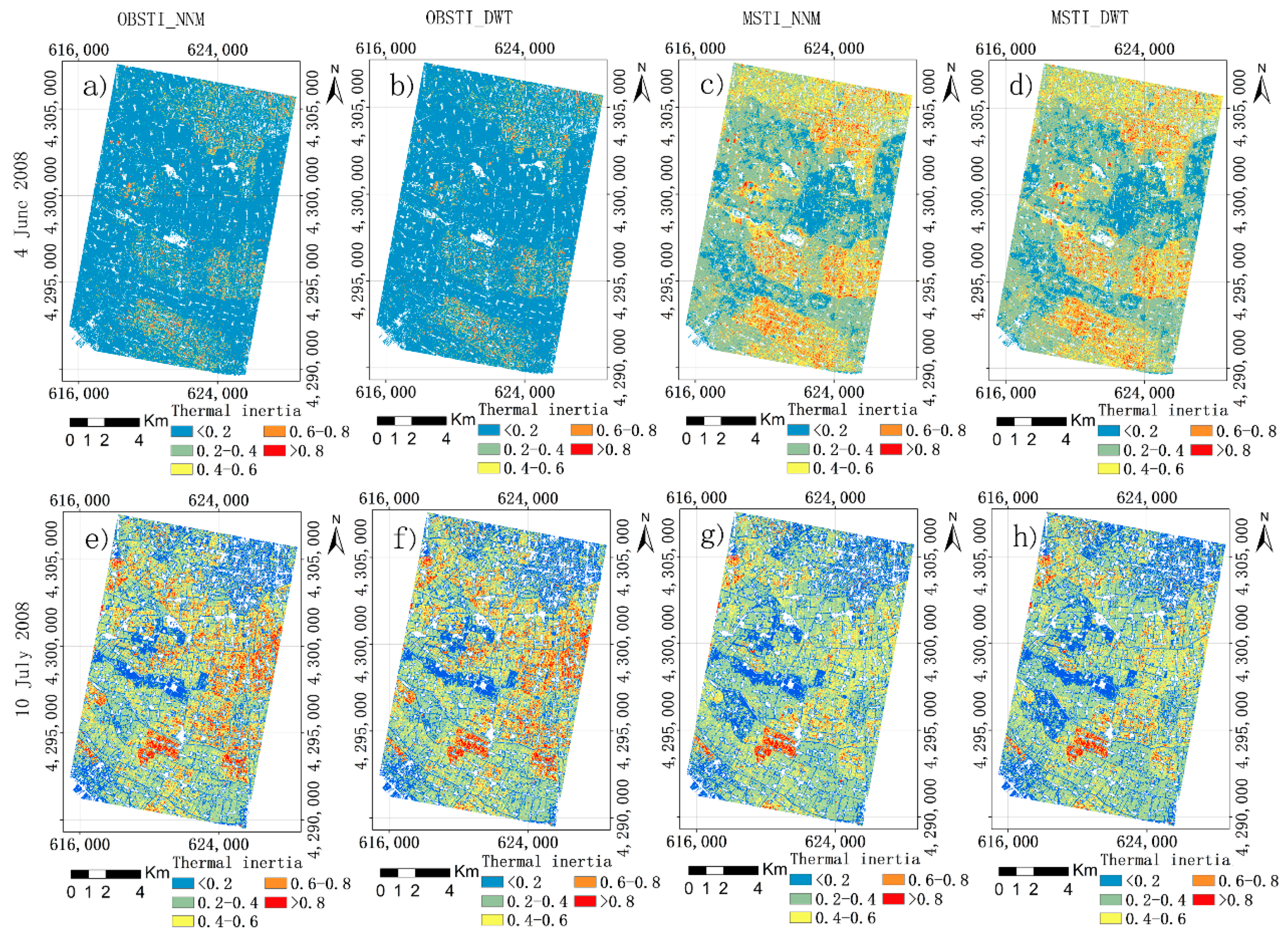
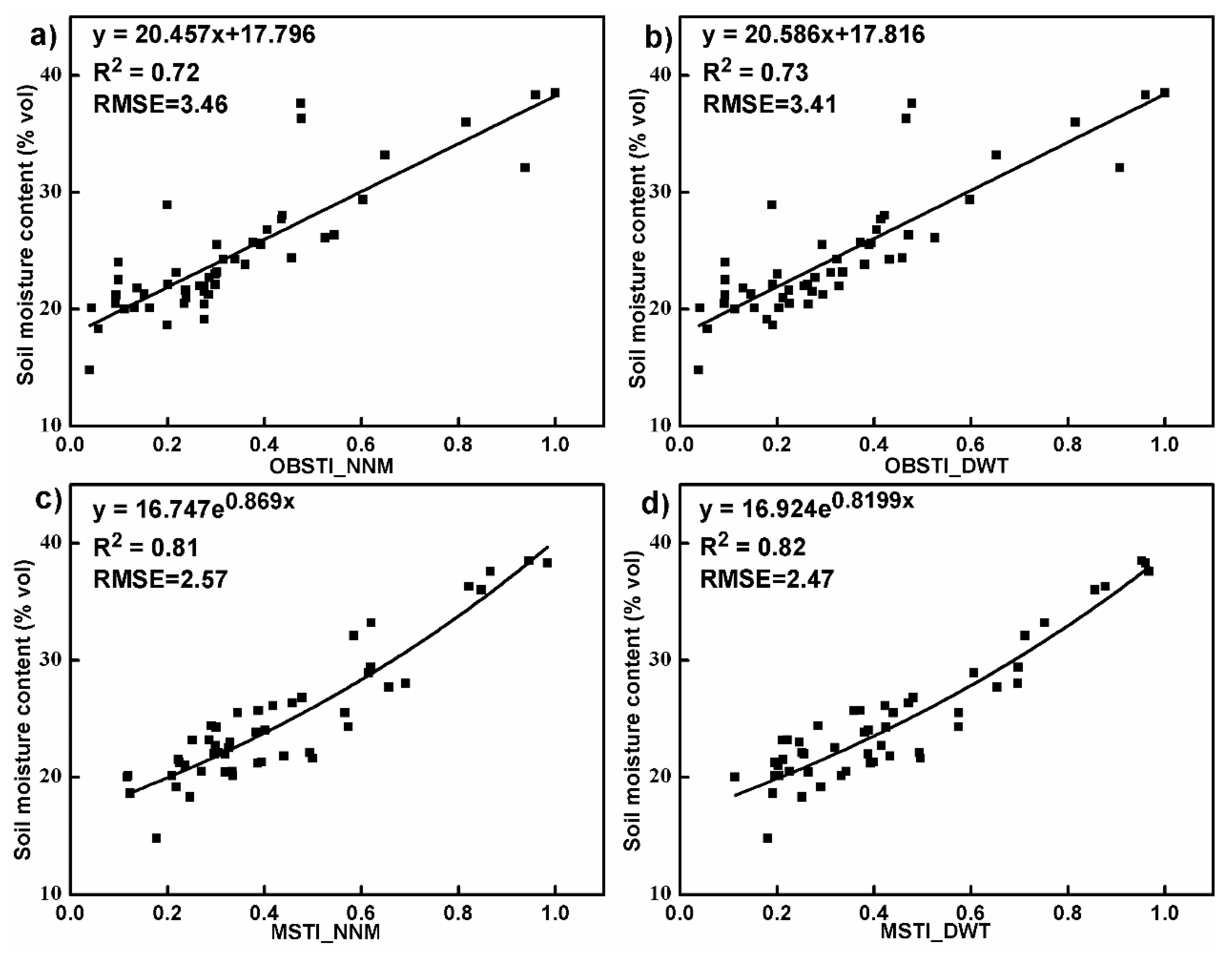

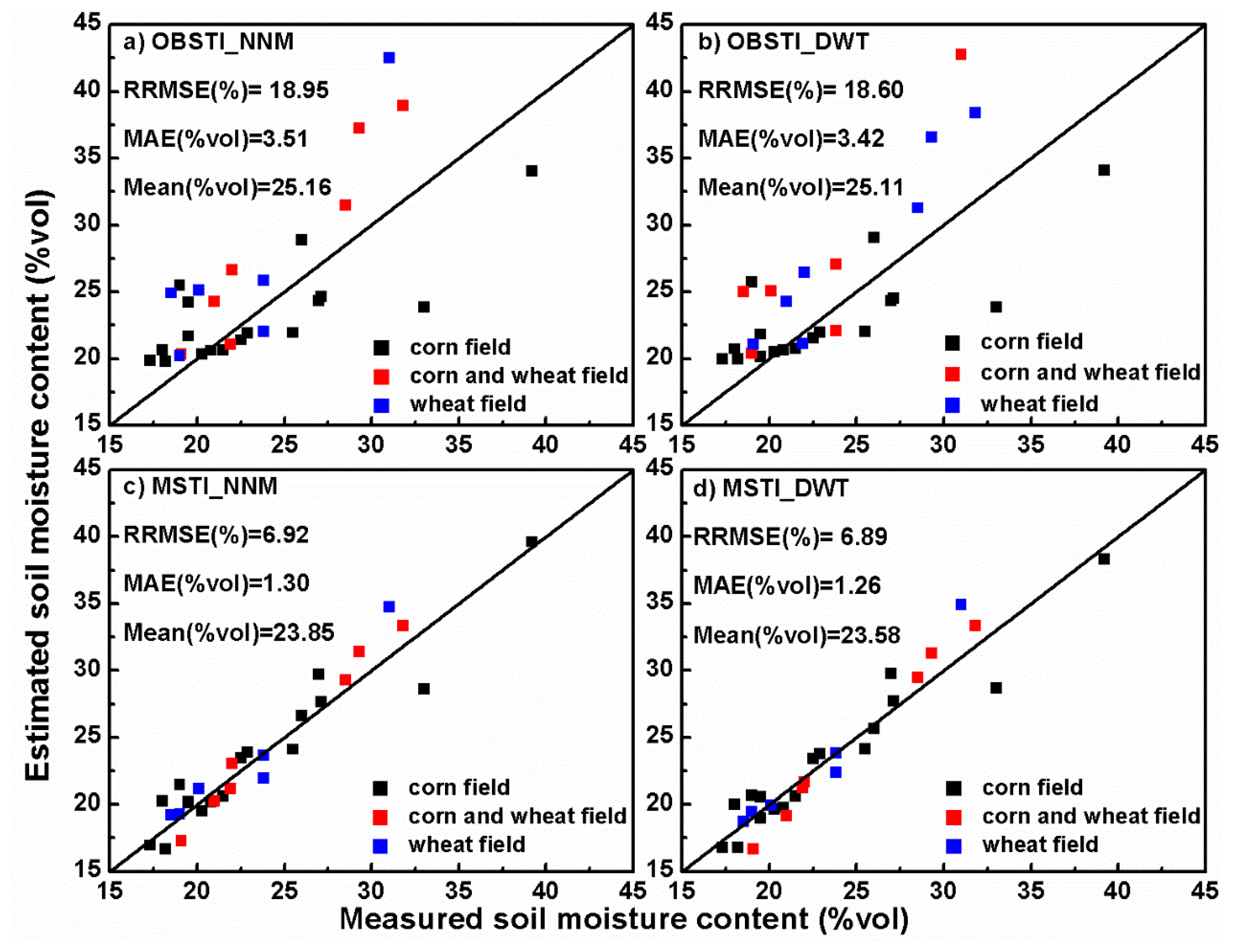

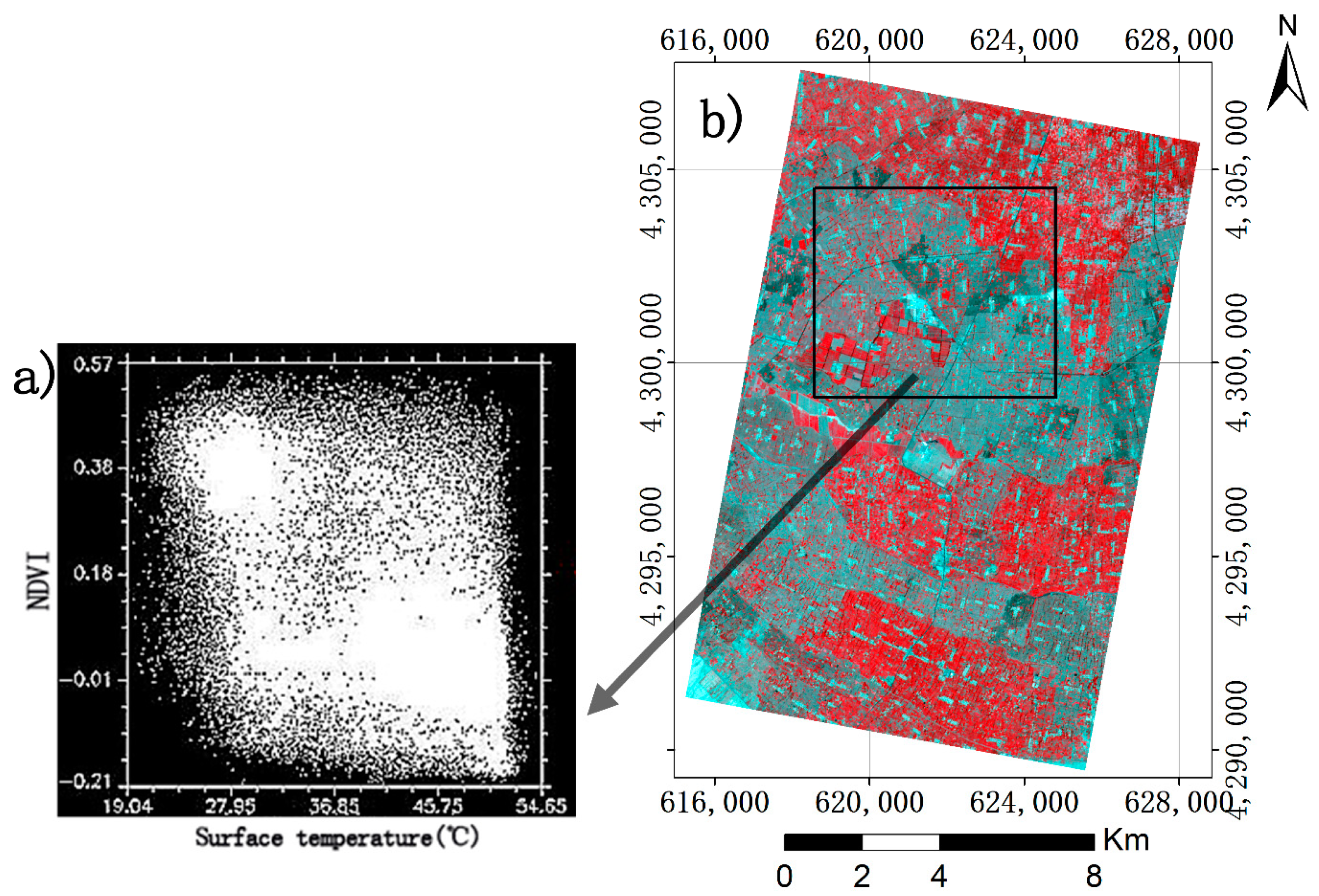
| Model | Linear Model | Exponential Mode | Logarithm Model | Power Model | ||||
|---|---|---|---|---|---|---|---|---|
| Thermal inertia | R2 | RMSE | R2 | RMSE | R2 | RMSE | R2 | RMSE |
| OBSTI_NNM | 0.72 | 3.46 | 0.71 | 3.75 | 0.59 | 3.67 | 0.63 | 3.49 |
| OBSTI_DWT | 0.73 | 3.41 | 0.72 | 3.75 | 0.58 | 3.66 | 0.63 | 3.47 |
| MSTI_NNM | 0.83 | 2.73 | 0.81 | 2.57 | 0.70 | 3.76 | 0.72 | 3.34 |
| MSTI_DWT | 0.85 | 2.67 | 0.82 | 2.47 | 0.71 | 3.78 | 0.72 | 3.37 |
© 2020 by the authors. Licensee MDPI, Basel, Switzerland. This article is an open access article distributed under the terms and conditions of the Creative Commons Attribution (CC BY) license (http://creativecommons.org/licenses/by/4.0/).
Share and Cite
Liu, Z.; Zhao, L.; Peng, Y.; Wang, G.; Hu, Y. Improving Estimation of Soil Moisture Content Using a Modified Soil Thermal Inertia Model. Remote Sens. 2020, 12, 1719. https://doi.org/10.3390/rs12111719
Liu Z, Zhao L, Peng Y, Wang G, Hu Y. Improving Estimation of Soil Moisture Content Using a Modified Soil Thermal Inertia Model. Remote Sensing. 2020; 12(11):1719. https://doi.org/10.3390/rs12111719
Chicago/Turabian StyleLiu, Zhenhua, Li Zhao, Yiping Peng, Guangxing Wang, and Yueming Hu. 2020. "Improving Estimation of Soil Moisture Content Using a Modified Soil Thermal Inertia Model" Remote Sensing 12, no. 11: 1719. https://doi.org/10.3390/rs12111719
APA StyleLiu, Z., Zhao, L., Peng, Y., Wang, G., & Hu, Y. (2020). Improving Estimation of Soil Moisture Content Using a Modified Soil Thermal Inertia Model. Remote Sensing, 12(11), 1719. https://doi.org/10.3390/rs12111719






